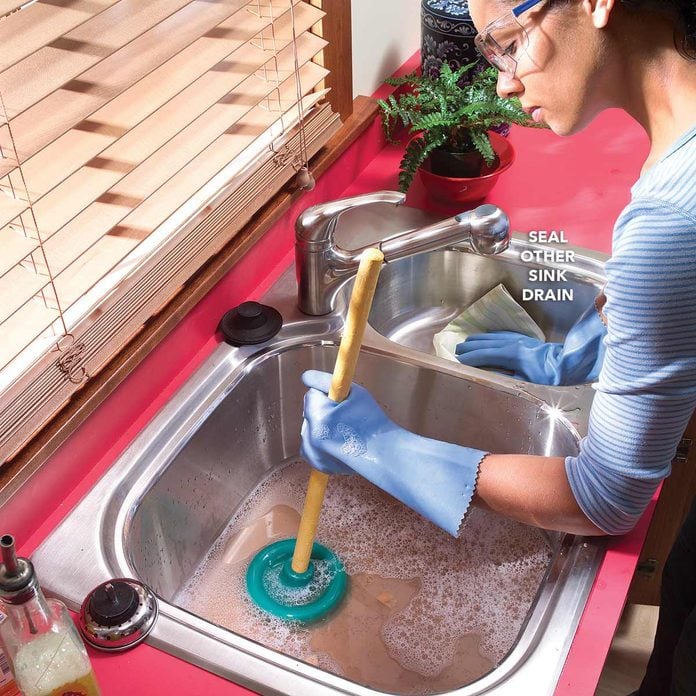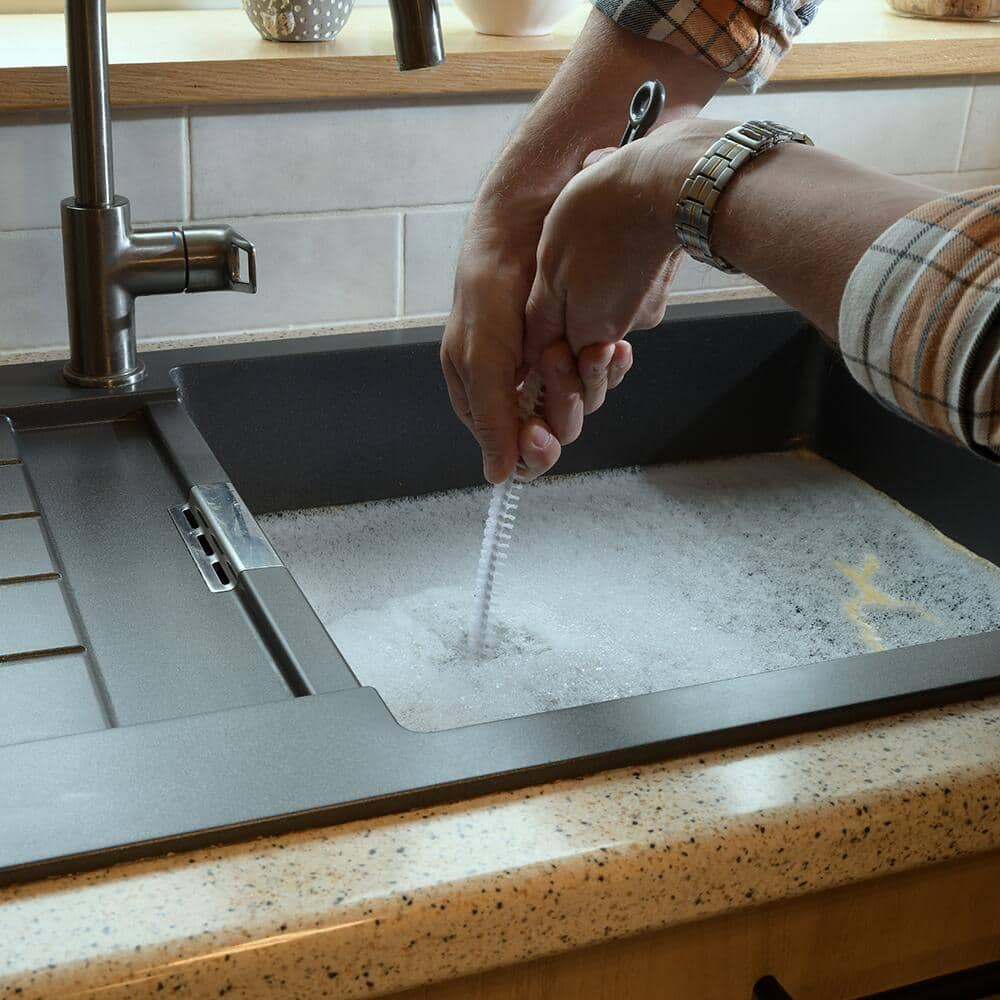Discover Plungers and Drain Cleaner Techniques: Specialist Tips
Discover Plungers and Drain Cleaner Techniques: Specialist Tips
Blog Article
Are you hunting for advise around Here's How to Correctly Use a Toilet Plunger?

Intro
Correct upkeep of home drains pipes is crucial for stopping clogs and making sure smooth water circulation. One of the trick tools in every home owner's toolkit is the bettor, together with various drainpipe cleaners designed to take on stubborn obstructions successfully. This article discovers how to make use of plungers and drainpipe cleaners successfully to keep your drains moving freely.
Area 1: Understanding Plungers
Sorts of Plungers
There are several kinds of bettors readily available, each designed for various types of drains pipes and obstructs. The most typical kinds include cup bettors, flange bettors, and accordion plungers.
Exactly How Plungers Job
Bettors work on the principle of creating pressure and suction to remove blockages. When effectively applied over a drain, they create a vacuum that can pull out debris or separate obstructions.
Picking the Right Bettor
Selecting the best plunger relies on the sort of drain and the nature of the clog. Cup plungers are excellent for sinks and tubs, while flange plungers are much better suited for toilets due to their style.
Typical Mistakes with Bettors
Avoiding these mistakes ensures reliable plunging: inappropriate seal around the drainpipe, inadequate pressure, and not clearing surrounding particles.
Section 2: Making Use Of Plungers Efficiently
Prep work
Before diving, guarantee the bettor covers the drain entirely and forms a limited seal. Clear any visible particles around the drain opening.
Method
Beginning with gentle plunging activities to build suction. Boost stress progressively, using a consistent rhythm. Repeat as essential until the drain removes.
Repairing Tips
If diving does not work, try readjusting the seal, applying petroleum jelly for a much better seal, or making use of a different type of plunger.
Section 3: Comprehending Drainpipe Cleaning Company
Types of Drain Cleaners
Drain cleaners can be chemical or enzymatic. Chemical cleaners utilize strong chemicals to liquify clogs, while enzymatic cleaners utilize all-natural enzymes to break down raw material.
Just How Drain Cleaners Job
Chemical cleansers react with blockages to dissolve them, while chemical cleaners break down natural products like hair and grease without damaging pipes.
Safety Factors to consider
Always put on gloves and eye defense when utilizing chemical drainpipe cleaners. Ensure appropriate ventilation and comply with manufacturer directions carefully.
Eco-Friendly Alternatives
Take into consideration using vinegar and baking soda or enzyme-based cleansers for environmentally friendly alternatives that are much safer for pipelines and the environment.
Area 4: Using Drain Cleaning Company Efficiently
Application Methods
Put chemical cleaners straight right into the drain opening. Enable them to benefit the advised time before flushing with warm water. Chemical cleansers should sit overnight.
Preventative measures
Stay clear of mixing different types of cleaners, as this can create hazardous fumes. Never ever make use of chemical cleansers in conjunction with a plunger, as splashing can occur.
Handling Stubborn Blockages
For persistent clogs, take into consideration utilizing a plumbing serpent or calling a professional plumbing technician to stop damages to pipes.
Verdict
Finally, recognizing just how to make use of plungers and drain cleansers effectively is important for maintaining healthy plumbing systems. By picking the right devices and methods, property owners can take on minor clogs and protect against major pipes problems down the line.
How To Properly Use A Plumbing Snake To Clear Drains
When any drain clogs in our home arise, we tend to gravitate toward the plunger and little else. In cases where the plunger and its vacuum-created pressure are not able to clear clogs, many immediately move to harmful chemicals or simply call their plumber to fix the issue.
we’re happy to help with all drain cleaning needs and concerns. This includes informing you on a few other home remedies you may have at your disposal for minor to moderate clogs, one of which is the use of a plumbing snake. Many people have never used one of these before – let’s go over the steps to take when your drain clogs and you have a plumbing snake available.
Attempt Plunger Use
The first step here, as we noted above, should indeed be to grab your plunger when you notice a drain clog and attempt to resolve it this way. If you’re unsure how to use a particular type of plunger, our plumbers can answer any questions you have. If this doesn’t do the trick, however, you move on to the snake.
Locate And Prepare Snake
A plumbing snake is a metal or plastic device that’s generally about a quarter of an inch thick. It’s design with significant extensions, meant to reach down into your clogged drain and push the clog out. Snakes also contain drain augers that will latch onto and push stubborn blockages.
If your plunger doesn’t clear a clog, locate your snake and bring it to the drain in question. We also recommend keeping a bucket nearby to collect the clog once you pull it out, plus we’d advise wearing goggles and possibly protective gloves.
Feed Snake
Once you’re ready to go, feed the snake slowly down the drain, using the crank device it comes with to keep it moving until it finds the clog. Once this happens, much of the clog will be latched onto the coil so you can pull it out, while the rest will simply break up and flow downward.
Detach Debris
Remove the snake slowly from the drain, and once you’ve done so, pick off any debris that’s stuck to the coil. This is another area where wearing gloves is a must.
Flush Drain
Finally, take a few minutes to ensure the snake has done its job correctly. If you’ve been using it on a toilet, flush the toilet a couple times and make sure everything flows well. If you’ve used it on a different drain, flush it with some room temperature water.
https://www.mybuddytheplumber.com/blog/how-to-properly-use-a-plumbing-snake-to-clear-drains/

Application Methods
Put chemical cleaners straight right into the drain opening. Enable them to benefit the advised time before flushing with warm water. Chemical cleansers should sit overnight.
Preventative measures
Stay clear of mixing different types of cleaners, as this can create hazardous fumes. Never ever make use of chemical cleansers in conjunction with a plunger, as splashing can occur.
Handling Stubborn Blockages
For persistent clogs, take into consideration utilizing a plumbing serpent or calling a professional plumbing technician to stop damages to pipes.
Verdict
Finally, recognizing just how to make use of plungers and drain cleansers effectively is important for maintaining healthy plumbing systems. By picking the right devices and methods, property owners can take on minor clogs and protect against major pipes problems down the line.
How To Properly Use A Plumbing Snake To Clear Drains
When any drain clogs in our home arise, we tend to gravitate toward the plunger and little else. In cases where the plunger and its vacuum-created pressure are not able to clear clogs, many immediately move to harmful chemicals or simply call their plumber to fix the issue.
we’re happy to help with all drain cleaning needs and concerns. This includes informing you on a few other home remedies you may have at your disposal for minor to moderate clogs, one of which is the use of a plumbing snake. Many people have never used one of these before – let’s go over the steps to take when your drain clogs and you have a plumbing snake available.
Attempt Plunger Use
The first step here, as we noted above, should indeed be to grab your plunger when you notice a drain clog and attempt to resolve it this way. If you’re unsure how to use a particular type of plunger, our plumbers can answer any questions you have. If this doesn’t do the trick, however, you move on to the snake.
Locate And Prepare Snake
A plumbing snake is a metal or plastic device that’s generally about a quarter of an inch thick. It’s design with significant extensions, meant to reach down into your clogged drain and push the clog out. Snakes also contain drain augers that will latch onto and push stubborn blockages.
If your plunger doesn’t clear a clog, locate your snake and bring it to the drain in question. We also recommend keeping a bucket nearby to collect the clog once you pull it out, plus we’d advise wearing goggles and possibly protective gloves.
Feed Snake
Once you’re ready to go, feed the snake slowly down the drain, using the crank device it comes with to keep it moving until it finds the clog. Once this happens, much of the clog will be latched onto the coil so you can pull it out, while the rest will simply break up and flow downward.
Detach Debris
Remove the snake slowly from the drain, and once you’ve done so, pick off any debris that’s stuck to the coil. This is another area where wearing gloves is a must.
Flush Drain
Finally, take a few minutes to ensure the snake has done its job correctly. If you’ve been using it on a toilet, flush the toilet a couple times and make sure everything flows well. If you’ve used it on a different drain, flush it with some room temperature water.
https://www.mybuddytheplumber.com/blog/how-to-properly-use-a-plumbing-snake-to-clear-drains/

I stumbled upon that piece about Tips on How to Effectively Use a Plunger when scouting around the internet. Enjoyed our write up? Please quickly share it. Help somebody else locate it. I thank you for your readership.
Click Here Report this page